Abstract
The activities of cefamandole, cephalothin, ampicillin, and chloramphenicol were compared in fulminant and temperate Escherichia coli meningitis in rabbits. Intensive dosing schedules were employed to achieve maximal therapeutic benefits with short-term treatment. In an 8-h schedule chloramphenicol was significantly more effective in sterilizing the cerebrospinal fluid and curing both fulminant and temperate infections than cefamandole or ampicillin. Cephalothin was without effect in fulminant meningitis. Cefamandole and ampicillin were equivalent in activity in this and longer (12- and 24-hr) treatment schedules. The therapeutic benefits of chloramphenicol were purchased via use of doses above those generally regarded as safe for human use. The mean serum, cerebrospinal fluid, and brain concentrations of chloramphenicol, cefamandole, and ampicillin were significantly greater in rabbits with fulminant meningitis than in those with temperate meningitis. The difference was of such magnitude as to support the need to monitor drug concentrations.
Full text
PDF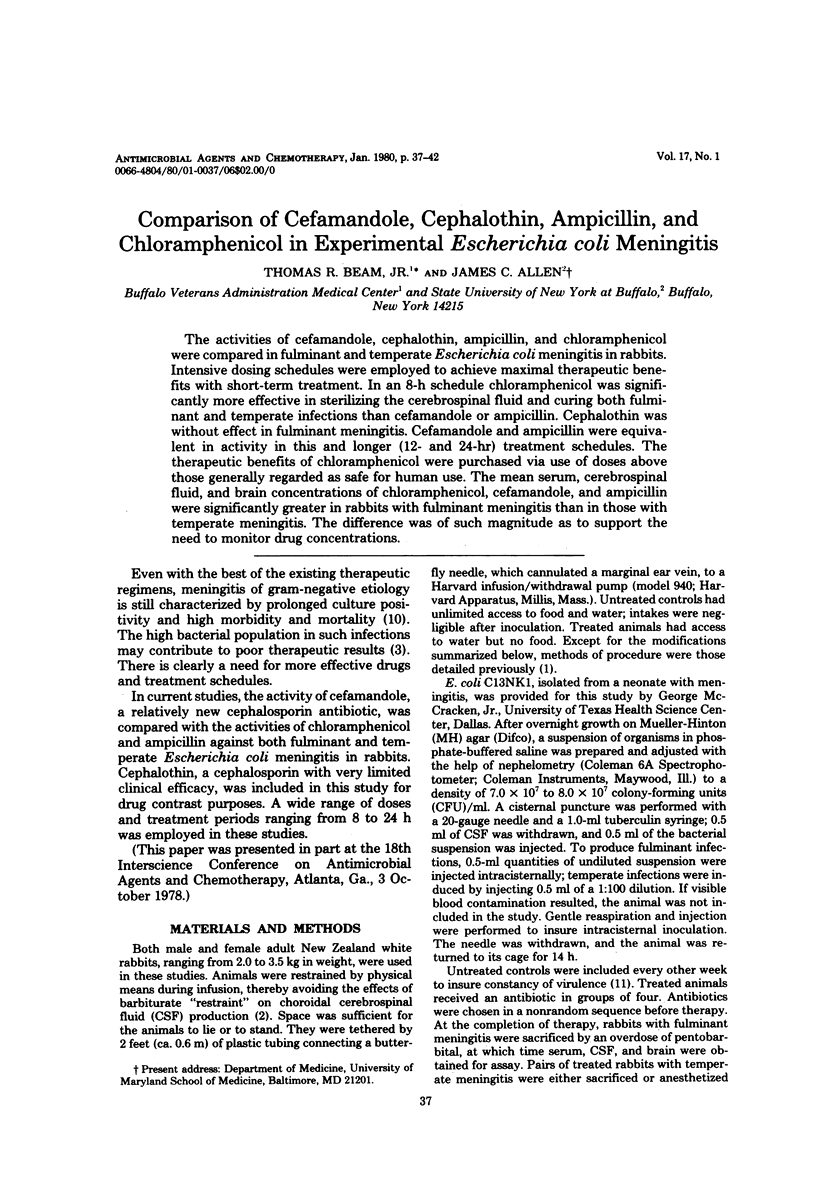
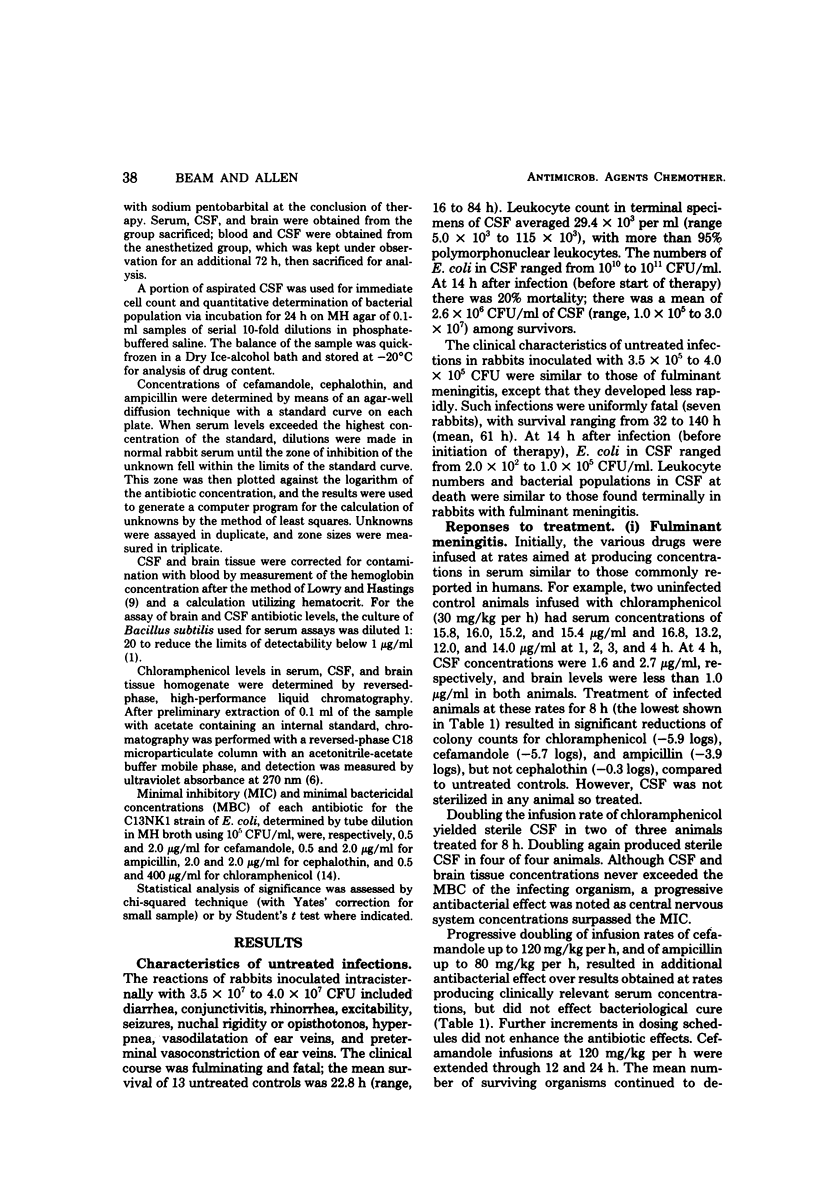
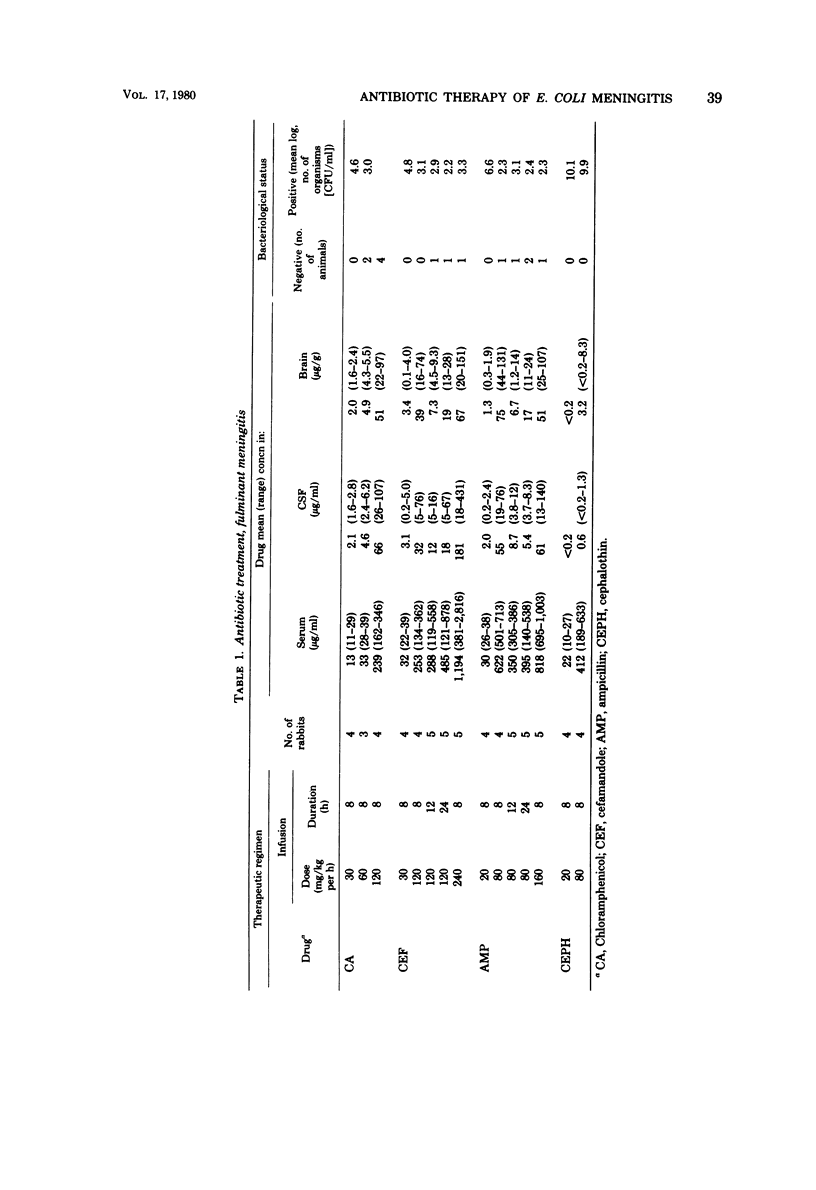
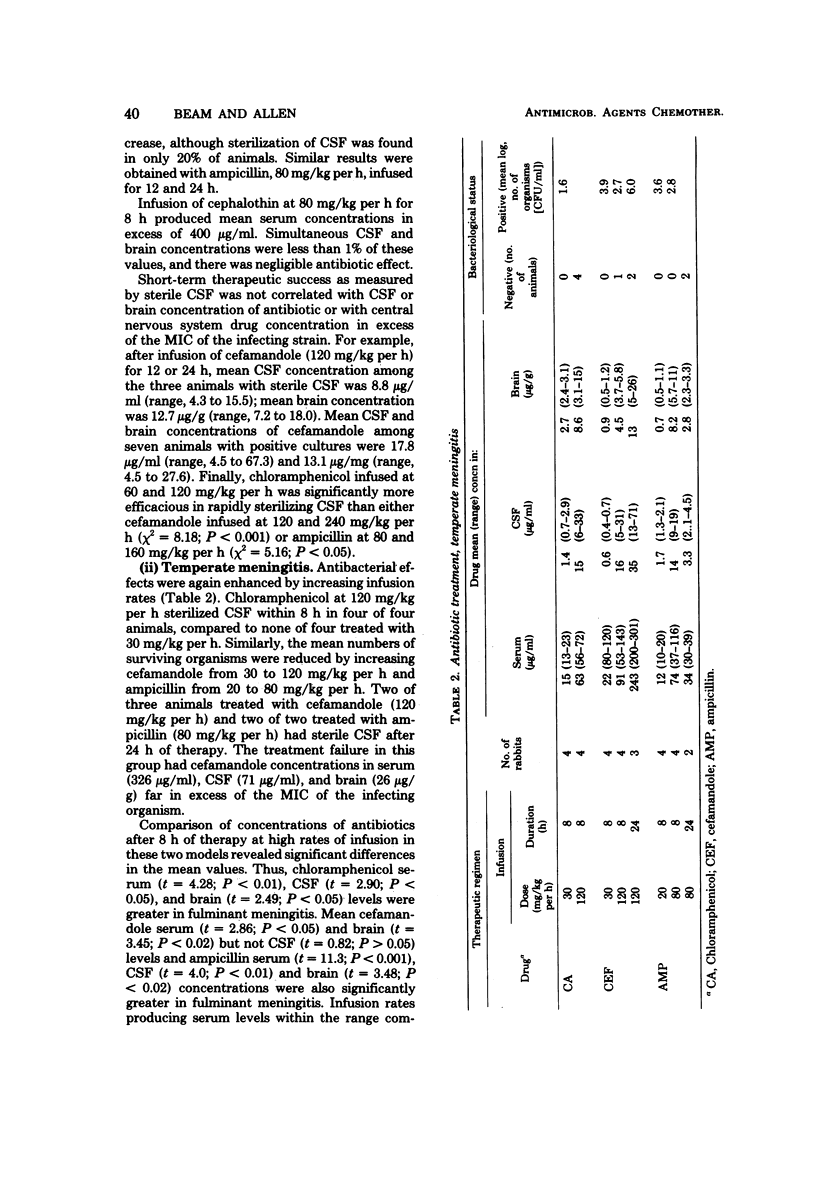
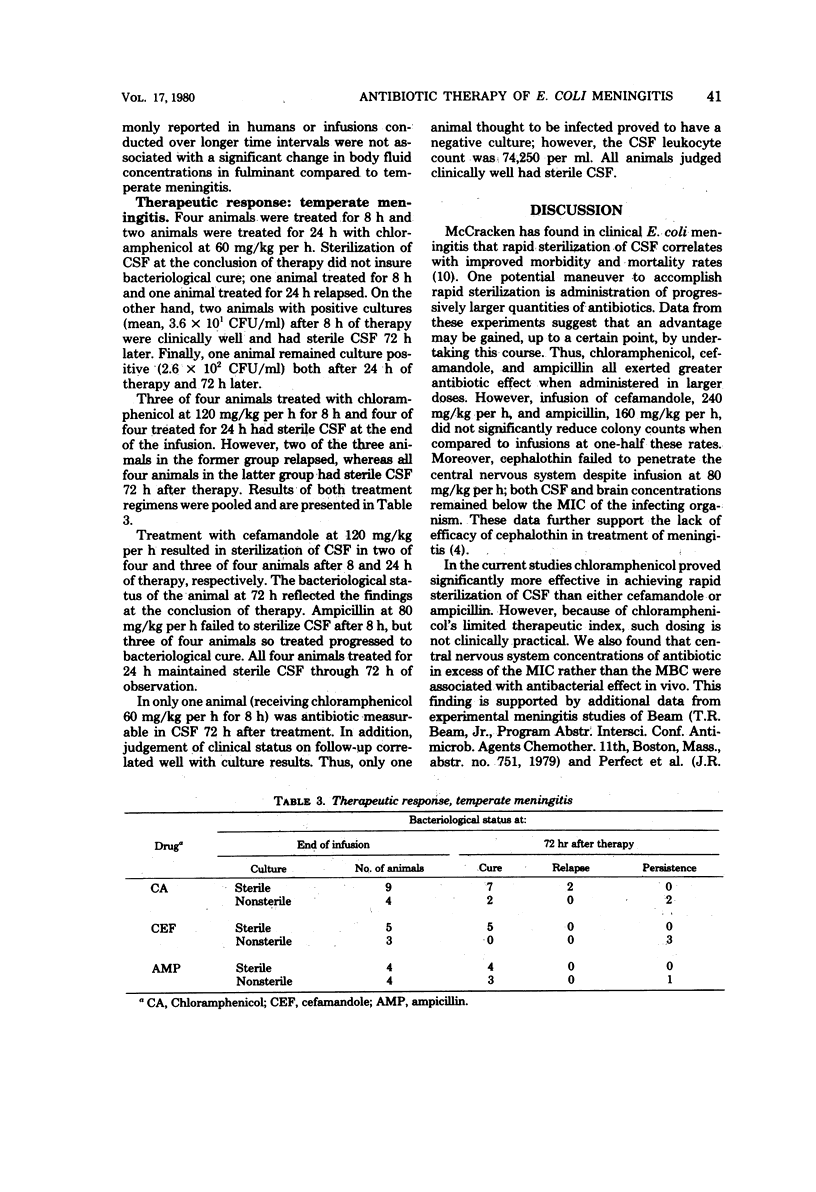
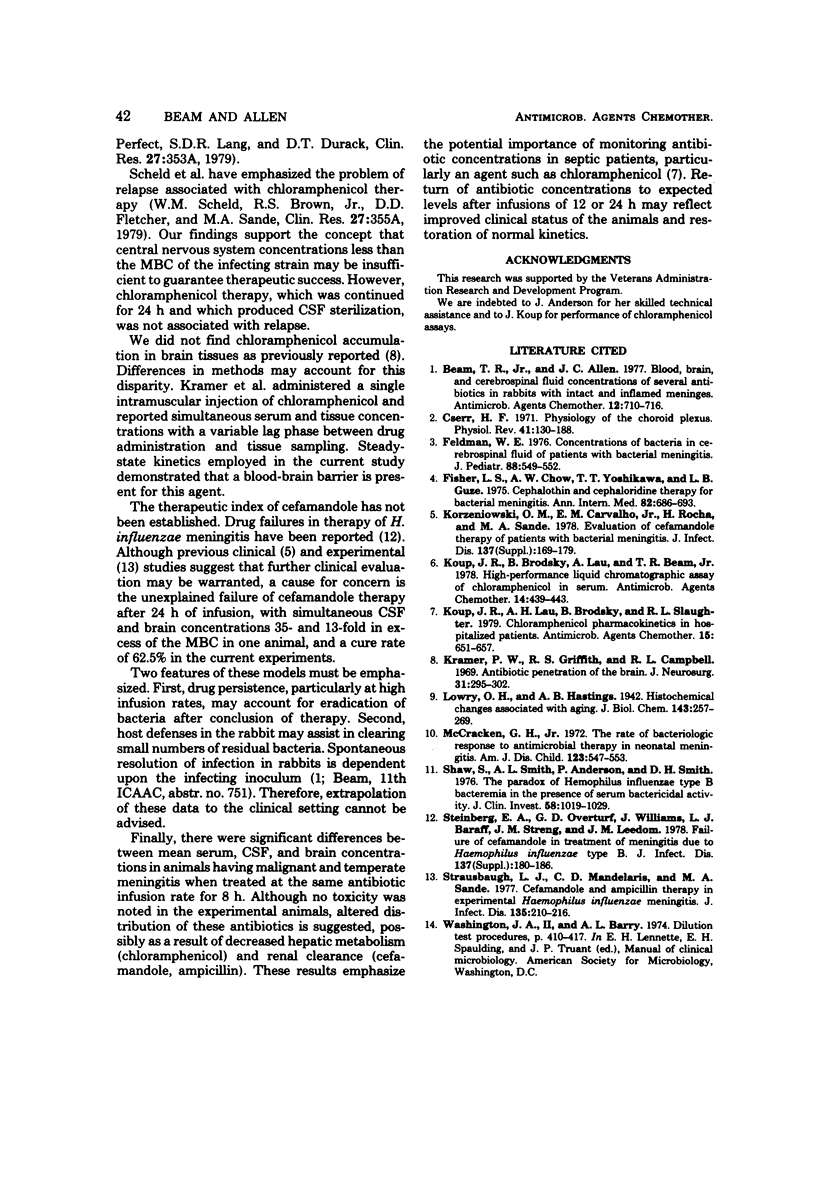
Selected References
These references are in PubMed. This may not be the complete list of references from this article.
- Beam T. R., Jr, Allen J. C. Blood, brain, and cerebrospinal fluid concentrations of several antibiotics in rabbits with intact and inflamed meninges. Antimicrob Agents Chemother. 1977 Dec;12(6):710–716. doi: 10.1128/aac.12.6.710. [DOI] [PMC free article] [PubMed] [Google Scholar]
- Feldman W. E. Concentrations of bacteria in cerebrospinal fluid of patients with bacterial meningitis. J Pediatr. 1976 Apr;88(4 Pt 1):549–552. doi: 10.1016/s0022-3476(76)80003-0. [DOI] [PubMed] [Google Scholar]
- Fisher L. S., Chow A. W., Yoshikawa T. T., Guze L. B. Cephalothin and cephaloridine therapy for bacterial meningitis. Ann Intern Med. 1975 May;82(5):689–693. doi: 10.7326/0003-4819-82-5-689. [DOI] [PubMed] [Google Scholar]
- Koup J. R., Brodsky B., Lau A., Beam T. R., Jr High-performance liquid chromatographic assay of chloramphenicol in serum. Antimicrob Agents Chemother. 1978 Sep;14(3):439–443. doi: 10.1128/aac.14.3.439. [DOI] [PMC free article] [PubMed] [Google Scholar]
- Koup J. R., Lau A. H., Brodsky B., Slaughter R. L. Chloramphenicol pharmacokinetics in hospitalized patients. Antimicrob Agents Chemother. 1979 May;15(5):651–657. doi: 10.1128/aac.15.5.651. [DOI] [PMC free article] [PubMed] [Google Scholar]
- Kramer P. W., Griffith R. S., Campbell R. L. Antibiotic penetration of the brain. A comparative study. J Neurosurg. 1969 Sep;31(3):295–302. doi: 10.3171/jns.1969.31.3.0295. [DOI] [PubMed] [Google Scholar]
- McCracken G. H., Jr The rate of bacteriologic response to antimicrobial therapy in neonatal meningitis. Am J Dis Child. 1972 Jun;123(6):547–553. doi: 10.1001/archpedi.1972.02110120071004. [DOI] [PubMed] [Google Scholar]
- Shaw S., Smith A. L., Anderson P., Smith D. H. The paradox of Hemophilus infuenzae type B bacteremia in the presence of serum bactericidal activity. J Clin Invest. 1976 Oct;58(4):1019–1029. doi: 10.1172/JCI108525. [DOI] [PMC free article] [PubMed] [Google Scholar]
- Strausbaugh L. J., Mandaleris C. D., Sande M. A. Cefamandole and ampicillin therapy in experimental Haemophilus influenzae meningitis. J Infect Dis. 1977 Feb;135(2):210–216. doi: 10.1093/infdis/135.2.210. [DOI] [PubMed] [Google Scholar]


